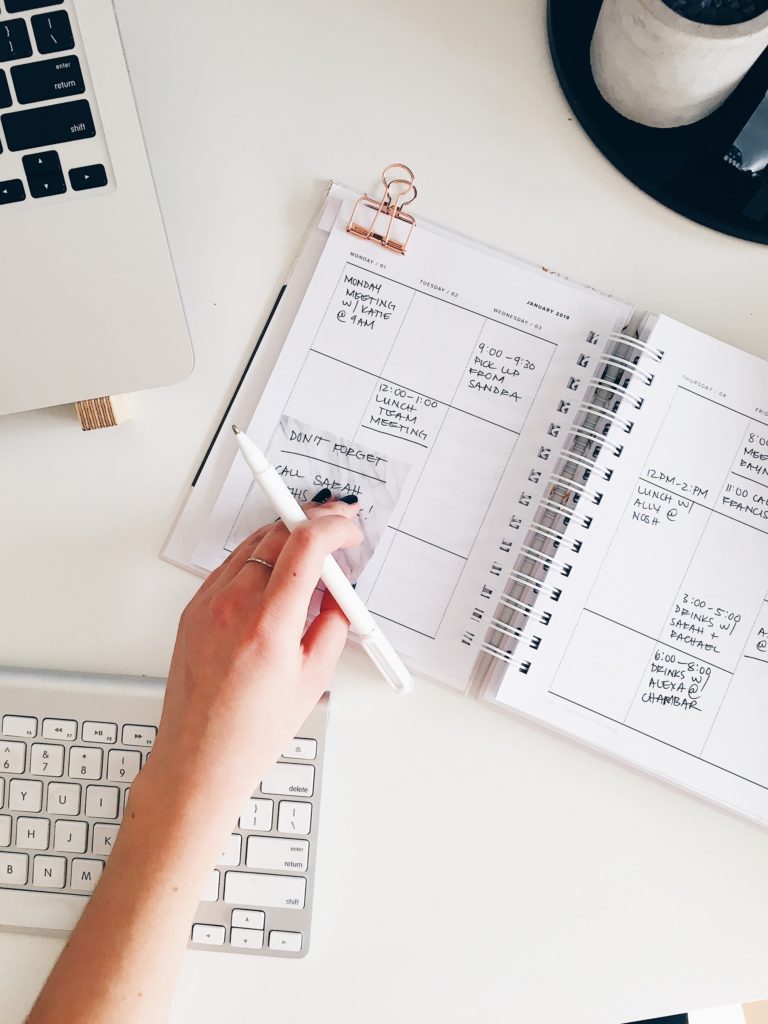The older you get, the faster time passes in your mind, so use your time according to what is most important.
A.J. Darkholme
Have you ever experienced this feeling, when the day seems to not have enough hours for everything you want to do? When your list of To-Dos is not only overwhelming but also paralyzes you to start doing anything?
Most pirates in the Moonshot Pirates community are between 15 and 19 years old. This means that we are still attending school for several hours several days a week, usually followed by a period of doing homework and studying for our exams. Add eating, sleeping, and doing some sports and there seems to be no time left for all the other things you want to do (like reading, writing, or working on your project to change the world). Since I have found myself in such a situation over and over again, I came up with a few tricks on productivity that have helped me to implement more structure in my days and get more done.
My Personal Productivity Tricks
Before you can go into planning, you should make yourself aware of how much time you spend on what. The best way to figure this out is to write down how a typical day looks for you. When do you get up? Are there some fixed happenings or appointments that happen regularly (like school)? When do you have free time? etc.
If all days of the week are totally different, you can also do such a list for a week. The purpose of this is to realize how many hours of free time you have during a normal week.
Finding Your Massive Transformative Purpose
Besides knowing when you have time, you must also know what you want to do with your time. You have to have a bigger goal, a why, a goal that guides you through your days like a north star. To find your MTP, your massive transformative purpose, I highly recommend this post. A strong MTP is crucial because it will be the force that will help you jump out of bed in the morning and start on your productivity.
Now that you know how much time you have for productivity, you can move on to what things you want to accomplish in it. Everyone has a different opinion on To-Do lists. I love them and will share my handlings with them here.
Don’t start the day until you have finished it on paper. Don’t start the week until you have finished it on paper. Don’t start the month until you have finished it on paper. Plan your day.
Jim Rohn

I like to work on this quote from Jim Rohn in the opposite way. As you did with your usual week, it’s now time to look at the coming month. Download or create a paper with the days of the next month (you can also do it on your computer if you’re more of an online type). Write in all the meetings, events, and important deadlines that will happen in that month. Make sure you keep this paper or document handy and on sight.
Writing a Productive To-Do List
Next, you can move on to your week. The best time to plan the coming week is Sunday. The process usually takes around 15 minutes. What I like to do is to write down all the things I would like to do, preferably in one long column, just like a To-Do list. You can also structure them after their importance or add deadlines. One helpful trick I have found here is to always add a verb to every To Do. So, for example, instead of writing “presentation” I write “finish my presentation”. This makes it much easier for my brain to get to work. Also, I highly recommend highlighting your MVPs, your most vital priorities (maximum 3!). These are tasks that either must be done and/or are crucial for achieving one of your big goals.
And here is where the game comes in 😉 The goal for the next day is to shorten this list as much as possible. Every day, take five minutes in the evening to review what you have accomplished and can cross off your list and which tasks you don’t have to do anymore because they have become redundant. Finally, you can transfer the remaining tasks to the next day and add any newly appeared ones. The goal remains the same for the rest of the week: Make your list shorter.
This mindset can serve as a motivation for you to get work done and also helps you to delegate or relinquish minor, unimportant tasks.
No matter if you prefer managing everything digital or on paper, there are endless possibilities and tools you can use to manage your productivity. This allows you to try many different approaches to productivity to find the one that fits into your current lifestyle. Just try to stick to one practice for at least a month before deciding to try something else. I personally have switched from paper to online to paper and back to online and as of today, I can recommend TickTick, an app (smartphone and laptop) that is both simple to use while also providing you with various functions if you want to plan more in detail.
2 Tricks to Free up More Time for Productivity
I would like to leave you with two more techniques that can free up more time for productivity in your schedule:
- The first one is habits. Once you make a task a habit, you can perform it smoothly and fast. This not only gives you more time for other things but also gives your brain a break, as it needs less cognitive energy to perform a task that has become a habit. You can dive deeper into habits here.
- The second tool is deep work. Deep work is “a state of distraction-free concentration that pushes your cognitive capabilities to their limit”, as Cal Newport, the author of the book “Deep Work” puts it. Deep work means sitting down with a clear goal in mind, removing all distractions (most importantly your phone!), and working until you are done or you’re not able to get more done in this session. Practicing deep work might be difficult in the beginning but if you manage to make a habit out of it, it will bring your productivity to a whole new level.
Book Recommendations on the Topic of Productivity
Here are some books on productivity if you want to go even deeper into this topic:
- Eat that Frog by Brian Tracy
- Getting Things Done by David Allen
- Atomic Habits by James Clear
So plan your year, month, week, and day now; then get to work to make your list shorter and achieve your goals!


